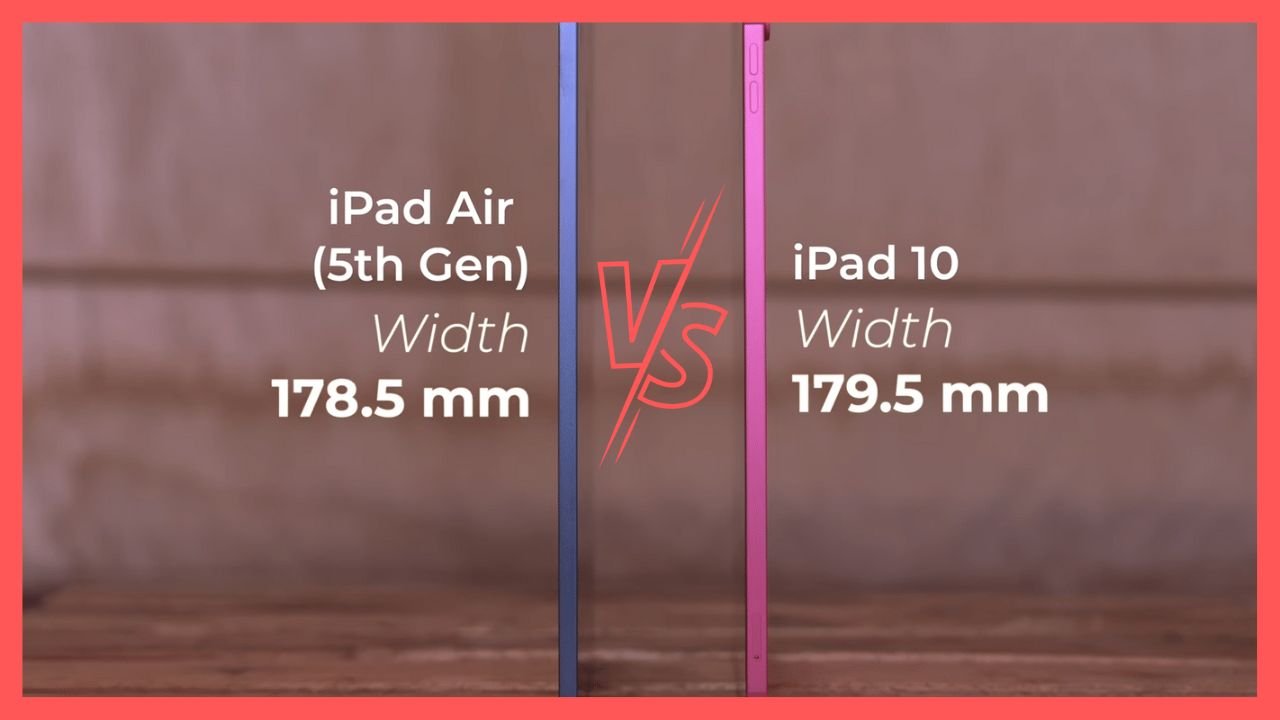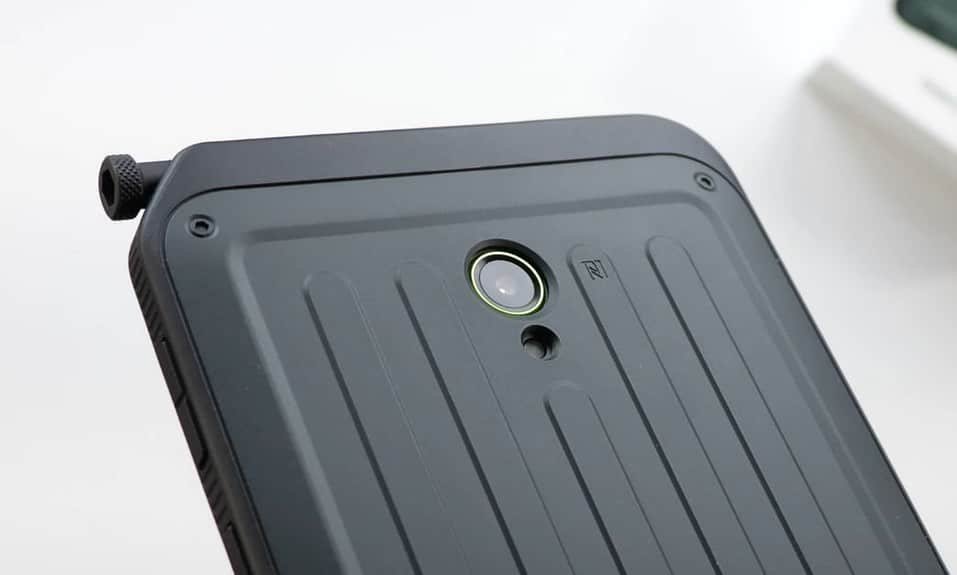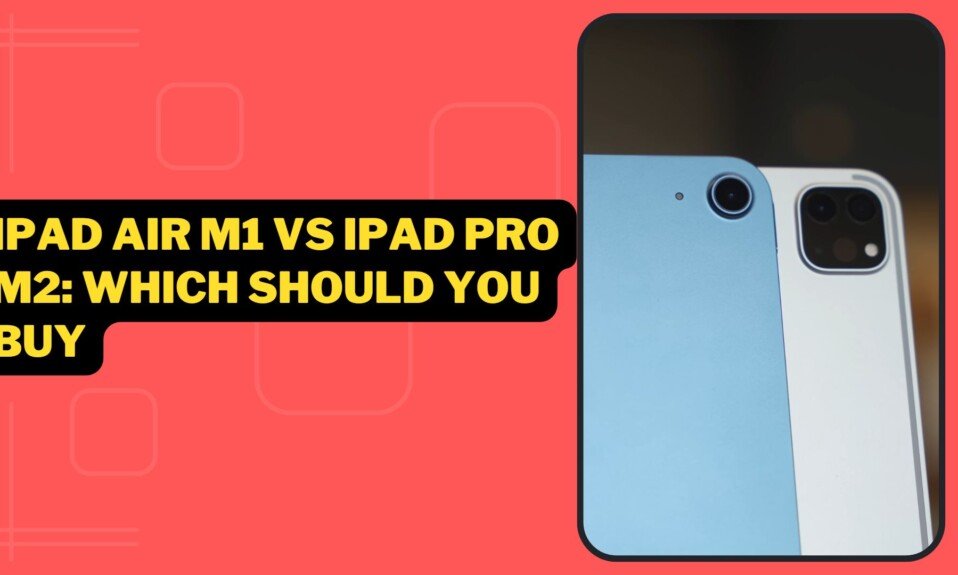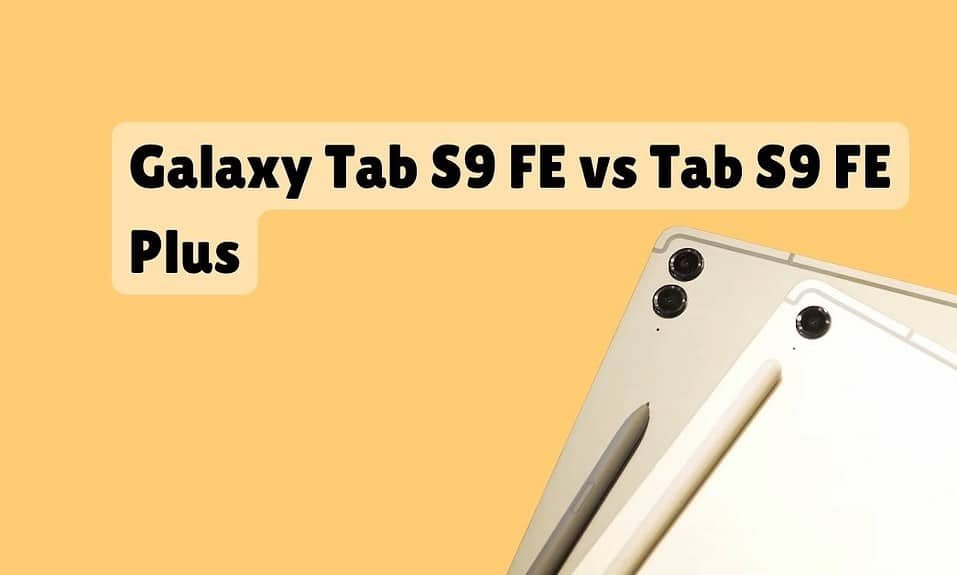Apple has announced the “iPad (10th generation)” entry model, which includes a USB-C port and a new flat edge design.
The iPad is powered by an M1 chip, which fully supports the multitasking features added to iPadOS 16, such as the new Stage Manager feature, which shows multiple apps at once and resizes overlapping windows, and the ability to connect to an external display. Many people should be concerned about the distinction between Air (5th generation) and Air (6th generation).
This article compares the iPad Air 5 and the iPad 10, and summarizes which model is best for you. Please keep this in mind when making a purchase.
Specification
| iPad 10 | iPad Air 5 | |
|---|---|---|
| Storage | 64GB 256GB | 64GB 256GB |
| Display | 2360 x 1640 at 264 ppi | 2360 x 1640 at 264 ppi |
| Screen size | 10.9 | 10.9 |
| Processor | A14 Bionic | M1 |
| Apple Pencil | First generation | Second generation |
| Dimensions | 9.79 x 7.07 x 0.28 inch | 9.74 x 7.02 x 0.24 inch |
| Weight | 1.05 p | 1.02 p |
| Battery | Up to 10 hrs | Up to 10 hrs |
| Rear camera | 12MP Wide | 12MP Wide |
| Front camera | Landscape 12MP Ultra Wide Center Stage | Ultra Wide front camera Center Stage |
| Audio | Landscape two speaker | Landscape two speaker |
| Connectivity | Wi-Fi 6, 5G, Bluetooth 5.2 | Wifi 6, 5G, Bluetooth 5.0 |
| Port | USB-C | USB-C |
| Biometric | Touch ID | Touch ID |
| Colors | Blue, Pink, Yellow, Silver | Space Gray, Starlight, Pink, Purple, Blue |
Differences
Processor:
The M1 iPad Air is equipped with the M1 chip, which is a more powerful and high-performance processor compared to the A14 chip used in the iPad 10. The M1 chip offers better performance for tasks such as video editing, photo editing, and gaming.
Multitasking:
The M1 iPad Air features a stage manager that allows for effective multitasking, even with an external monitor. This feature is not available on the iPad 10.
Laminated display:
The iPad Air has a laminated display, which means the display is fused to the glass. This provides a more accurate and premium writing experience, particularly useful for artists and note-taking. The iPad 10 does not have a laminated display.
Apple Pencil compatibility:
The iPad Air supports the Apple Pencil Generation 2, while the iPad 10 uses the Generation 1. Charging the Apple Pencil for the iPad 10 requires a converter, which can be inconvenient.
Display quality:
The iPad Air offers a slightly better display with more vibrant colors compared to the iPad 10.
Keyboard:
The iPad Air uses the Magic Keyboard, which is more premium and comfortable, while the iPad 10 uses the Keyboard Folio case.
Speakers:
The iPad Air has louder speakers compared to the iPad 10.
Camera Position:
iPad 10th Gen has a front camera positioned on the right side, making it more convenient for horizontal usage.
iPad Air 5th Gen has a front camera positioned at the top, which is less convenient for horizontal usage.
Other Shared Features:
- Same screen size of approximately 10.9 inches.
- Both feature Touch ID for convenient unlocking.
- USB connectivity and the same camera setup (wide-angle and ultra-wide-angle).
- Both offer 5G connectivity and start from 64 GB storage capacity.
- Similar battery life of around 10 hours.
The iPad 10th Generation is thicker and heavier than the iPad Air 5, despite looking similar. Second, in landscape position, the SMART connector is now on the bottom instead of the back panel.
Both iPads have the Touch ID fingerprint sensor on the shorter top Edge, but the iPad Air 5 has the Apple Pencil magnetic connector.
The iPad Air is excellent at 3D graphic design, advanced photo editing, and gaming because to its chips and RAM. The M1 chip’s specialized media engine aids video editing and enables Stage Manager, Apple’s new iPad multitasking system.
Apple has moved the front-facing camera from the portrait Edge to the landscape Edge, so when you’re having a video call on both iPads, you’ll see it. You’re at an odd side angle instead of the frame like you are on the iPad 10.
Both the iPad 10 and iPad Air 5 come with a screen that provides 2340 x 1640 pixels. The same pixel density of 264 pixels per inch. The iPad 10 lacks the wider P3 color space and anti-reflection coating. It’s also not fully laminated like the iPad Air 5.
Another difference between the iPad 10 and the iPad Air 5 shows that Apple has been doing this on purpose. Apple still sells the seven-year-old first-generation Apple Pencil for 125 USD with the iPad 10.
Design
- Both iPads have a similar form factor with minor variations.
- The color options differ, with the iPad Air offering more muted colors and the regular iPad having brighter colors.
- The iPad 10 is slightly thicker at 7mm compared to the iPad Air’s 6.1mm thickness.
- The iPad Air has a laminated display, making it feel more natural when using the Apple Pencil compared to the regular iPad.
The iPad 10 and iPad Air 5 both have an all-screen layout and do not have a home button. With flat sides and a back, it appears stylish.
The metal used for the body is all recycled aluminum. The surface is matte and smooth, which makes it difficult for fingerprints to adhere and hides dirt.
While they are both nearly the same size, the iPad Air 5 is a little lighter, thinner, and smaller.
There are five eye-catching colors available for the iPad Air 5: pink, purple, blue, starlight, and space gray. Silver, pink, blue, and yellow are the four vibrant colors available with the iPad 10.
Both the iPad 10 and the iPad Air 5 feature USB-C.
However, the USB 3.1 Gen 2 port in the iPad Air 5 allows for high-speed data transfer of up to 10 GBps. While the iPad 10 is verified to have the same speed as USB 2.0, the iPad mini 6 also has USB 3.1 Gen 1 (up to 5 Gbps).
The iPad 10 supports up to 4K/30Hz or 1080p/60Hz when connected to an external monitor, while the iPad Air 5 supports up to 6K resolution at 60Hz.
Display
- Both iPads feature a 1640 x 2360 Liquid Retina IPS panel with 500 nits peak brightness.
- The iPad Air supports P3 wide color, offering a broader range of colors compared to the sRGB support of the iPad 10.
- The iPad Air also has an anti-reflective coating on the glass, enhancing visibility in bright environments.
Both screens are 10.9 inches in size. It is a size that emphasizes portability, such as when working with a keyboard on a small table in a cafe. Both have the same pixel density of 2360 X 1640, and both are 60 hertz displays. But the iPad Air 5 uses a wide color gamut display (P3) that covers a 25% wider color gamut than sRGB, resulting in better image quality than the iPad 10. This is improved on the iPad Air 5.
If you need a 5G version, both iPads have the same 10.9-inch display when placed next to each other. The iPad 10 lacks the iPad Air 5’s anti-reflective coating and fully laminated display. The brightness will be similar when you put these screens next to each other. Colors contrast, but overall, both look good, whether you’re watching Netflix or your streaming app. YouTube videos can be viewed in 4K. Finally, they updated their app so you can zoom in on iPads to remove the black bars on top and bottom, which is nice.
Big difference with Apple Pencil
- The iPad Air supports the second-generation Apple Pencil, which is lighter and charges wirelessly.
- The iPad 10 is compatible with the first-generation Apple Pencil, which requires a Lightning port for charging.
- Third-party alternatives to Apple Pencil are available and offer a more affordable option.
One of the biggest differences between the two models is the Apple Pencil.
Apple Pencil, 2nd Generation Supported on iPad Air 5: The iPad Air 5 is compatible with the Apple Pencil (2nd generation), which has a matte finish and a non-slip and roll-resistant body. It connects to the side of your iPad and allows for wireless pairing and charging. You can also change tools by lightly tapping the pen.
The iPad 10 accepts the first-generation Apple Pencil: The iPad 10 accepts the first-generation Apple Pencil, which has a Lightning connector on a smooth body that makes it easy to roll.
For pairing and charging with an iPad 10 that lacks a Lightning connector, a “USB-C to Apple Pencil Adapter” is required. The Apple Pencil comes with an adapter, but the iPad 10 does not. If you already own the first-generation Apple Pencil, you’ll have to buy it separately.
The iPad Air has a full lamination display, which means that the cover glass, which the Apple Pencil directly touches, and the liquid crystal are almost integrated. Because the distance between the pen tip and the liquid crystal is small, writing is comfortable.
Both of them don’t have ProMotion technology, so when you move the Apple Pencil, lines and characters appear on the screen a little bit later.
Choose the iPad Air 5 if you use the Apple Pencil often or want to draw as well as take notes.
Both lack ProMotion technology, so lines and characters appear on the screen with a tiny delay from Apple Pencil movement. Choose the iPad Air 5 if you draw and write with Apple Pencil.
Speaker
Both have rounded corners, squared edges, and uniform bezels. Each iPad has two speakers and four grills. we thought they’d sound alike, but they don’t.
The iPad Air 5 speakers get louder. Bass, mids, and highs are more present. The iPad Air 5 speakers are better for movies, music, and games.
Camera
Both the main camera and the front camera have the same performance and functions. It also has a “central frame” that follows the user even when they move from the tablet’s front by using an ultra-wide-angle lens and machine learning.
The big difference is that the iPad 10 has a sideways front camera.
Including the top model iPad Pro, when the iPad is tilted sideways, the front camera is positioned on the right or left, so it is difficult to see the other person and avoid using it for remote interviews, online classes and FaceTime video chats. It can be stressful.
With the iPad 10 equipped with a landscape front camera, the front camera is positioned in the centre when tilted sideways, making it easier to meet the other person’s line of sight.
The entry model iPad is very popular with students, and it is expected that there will be many remote interviews during the corona crisis, so if you want to use it for job hunting, you may want to choose the iPad 10.
Storage
Both iPads offer the same storage options, starting at 64GB, but a 128GB base option would be preferred.
Connectivity
The iPad 10 has a slower USB-C port compared to the iPad Air, limiting external drive speeds to USB 2.0.
The iPad 10 supports up to 1080p at 60Hz or 4K at 30Hz external monitor output, while the iPad Air supports up to 6K at 60Hz and offers Stage Manager support.
We can see the power button with built-in Touch ID for biometric authentication as we continue around the edges. And this year, the entry-level iPad received a USB-C port for the first time.
That means you’ll be able to charge both of these iPads faster. It is possible to connect USB-C hubs, external SSDs, and an external display. However, these ports are not the same. The iPad 10 supports up to 1080p/60 or 4K/30 external displays. The iPad Air 5 has a maximum frequency of 6K/60 hertz. Another interesting distinction is the speed with which files are transferred.
Performance
One of the biggest differences between the two models lies in their performance capabilities. The iPad 10th Gen is powered by the A13 Bionic chip, which provides a significant boost in speed and efficiency compared to its predecessors. It offers smooth multitasking, handles demanding apps with ease, and provides an enjoyable gaming experience.
On the other hand, the iPad Air 5th Gen M1 is equipped with Apple’s powerful M1 chip, the same chip found in their latest MacBooks and iMacs. The M1 chip delivers exceptional performance, rivaling even some laptops. It offers a substantial increase in CPU and GPU performance, making it ideal for resource-intensive tasks such as video editing, gaming, and graphic design. The M1 chip also brings support for the Apple Pencil 2 and the Magic Keyboard, providing a more versatile and productive experience.
When it comes to performance, the M1 outperforms the A14 in both single and multi-core tests. In addition, it has four high-performance cores rather than two. Furthermore, the M1 outperforms the A14 in GPU performance, with an 8-core GPU versus a 4-core GPU on the A14. Of course, these are just benchmark scores, and the differences will be insignificant for the vast majority of users.
Battery life
Both the iPad 10 and the iPad Air 5 have a battery capacity of 28.6Wh. Although the display has the greatest influence on power consumption, the screen size, resolution, and brightness (brightness) remain constant.
The color gamut differs from the full lamination display, but it is unknown how much power consumption will be affected at this time. It will be revealed in the verification results after the release.
Furthermore, Apple has announced that the Internet and video playback times when using Wi-Fi or 4G/LTE are the same for both models.
Keyboard Accessories
The iPad 10 is compatible with the Magic Keyboard Folio, but it lacks a dedicated slot for the Apple Pencil.
The Logitech Combo Touch case is a recommended alternative for both iPads, offering a pencil holder and a more affordable price.
There are also differences in keyboard accessories that are useful when writing reports or blogging on the iPad.
Magic Keyboard Folio: iPad 10 supports “Magic Keyboard Folio” keyboard/trackpad/stand.
This multipurpose two-part keyboard accessory has a 1mm-deep scissor keyboard, 14 function keys, a Multi-Touch trackpad, and an adjustable stand. It protects your iPad’s front and rear.
Magic Keyboard: The ” Magic Keyboard ” accessory for the iPad Air 5 combines a protective cover and a keyboard.
You can charge the iPad from either the left or right side by installing a USB-C port that supports pass-through charging on the opposite side of the iPad’s USB-C port.
One of the features is the floating cantilever, which floats the iPad, preventing neck fatigue even when used for extended periods of time. The backlit keyboard allows you to type comfortably even in low-light situations.
Price
Due to its new design and specs, the iPad 10th gen is more expensive than the iPad air 5. iPad 10 prices and configurations are below.
The highest-storage iPad Air with cellular support costs more than the base iPad series. We listed iPad Air 2022 prices below.
Pros and Cons
iPad 10th Gen:
Pros:
- Affordable price compared to the iPad Air 5th Gen M1.
- Vivid colors on the display.
- Suitable for most tasks, including internet browsing, multimedia content, document work, and gaming.
- Compatibility with the 1st generation Apple Pencil.
- Comes with the Magic Keyboard Folio, which provides a hybrid case with a built-in keyboard.
Cons:
- Slightly thicker design compared to the iPad Air 5th Gen M1.
- Limited color range on the display (supports RGB, not P3).
- Screen is not laminated, leading to reflections and a small parallax gap when using the Apple Pencil.
- Less powerful chip (A14) compared to the M1 chip in the iPad Air 5th Gen.
- Requires an adapter to charge the Apple Pencil.
iPad Air 5th Gen M1:
Pros:
- Sleek design and potentially higher build quality.
- Wide color range display (supports P3), providing more accurate and vibrant colors.
- Laminated screen, reducing reflections and parallax when using the Apple Pencil.
- Powerful M1 chip, capable of handling more demanding tasks such as video editing and multitasking.
- Compatibility with the 2nd generation Apple Pencil.
- Supports the Magic Keyboard, offering trackpad and keys for enhanced productivity.
Cons:
- Higher price compared to the iPad 10th Gen.
- Colors on the display may be less vivid and more pastel.
- The M1 chip may not offer significant performance improvements for everyday tasks.
- The 2nd generation Apple Pencil may require an additional investment.
- Different keyboard compatibility (Magic Keyboard vs. Magic Keyboard Folio) may require adjustment.
iPad Alternative
Samsung Galaxy Tab S7+
- Display: 12.4-inch Super AMOLED display with 120Hz refresh rate
- Chip: Qualcomm Snapdragon 865 Plus processor
- Storage Options: 128GB or 256GB (expandable via microSD card)
- S Pen Compatibility: Included S Pen
- Keyboard Compatibility: Book Cover Keyboard
- Cameras: 13MP Wide and 5MP Ultra Wide rear cameras, 8MP front camera
- Connectivity: 5G capable (optional), Wi-Fi 6, USB-C port
- Operating System: Android
Pros: Vibrant Super AMOLED display with high refresh rate, included S Pen, expandable storage, 5G connectivity option, versatile camera system
Cons: Limited app optimization for tablets in Android ecosystem, may not offer the same level of performance as iPad Pro
Microsoft Surface Pro 7
- Display: 12.3-inch PixelSense display
- Chip: 10th generation Intel Core processors
- Storage Options: 128GB, 256GB, 512GB, or 1TB
- Pen Compatibility: Surface Pen (sold separately)
- Keyboard Compatibility: Type Cover (sold separately)
- Cameras: 8MP rear camera, 5MP front camera
- Connectivity: Wi-Fi, USB-C port
- Operating System: Windows 10 (upgradable to Windows 11)
Pros: Full Windows operating system, compatibility with wide range of Windows applications, versatile form factor with kickstand, expandable storage, USB-C port
Cons: Type Cover and Surface Pen sold separately, may not offer the same level of portability as dedicated tablets
Conclusion!
The iPad 10’s A14 Bionic chip is fast, efficient, and enables superluminal 5G. It supports fingerprint authentication Touch and has an all-screen design and 4 vibrant colours. The sideways front camera makes remote interviews and FaceTime stress-free and comfortable.
However, the iPad Air 5 features a matte body that resists rolling and slipping, a 2nd generation Apple Pencil that can be attached and charged without an adaptor, and a complete lamination display that makes writing more pleasant. It has the M1 chip, which is speedy, power-efficient, and enables iPadOS multitasking.
The iPad Air 5 is a 172 USD cheaper iPad for light usage like watching movies, remote meetings, and online classes if you want a comfortable tablet life with superb performance, the latest OS version, and a plethora of capabilities like a stage manager for a longer time. 10 is recommended.











